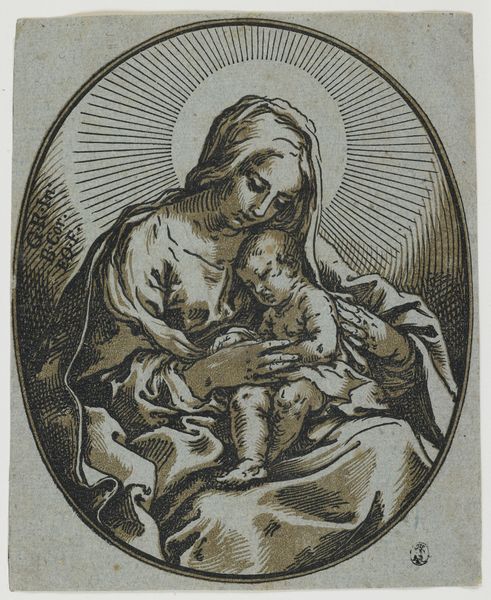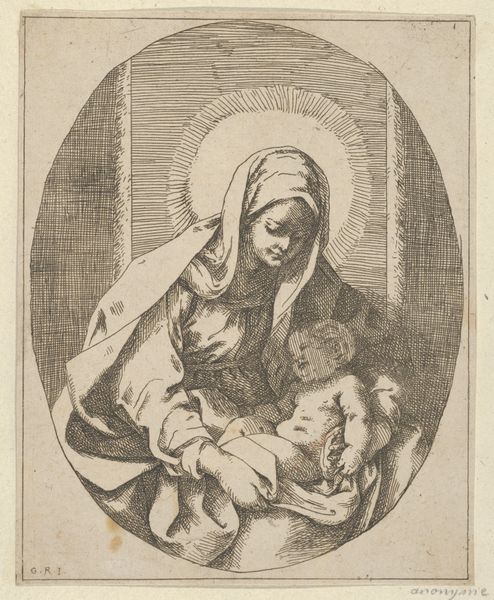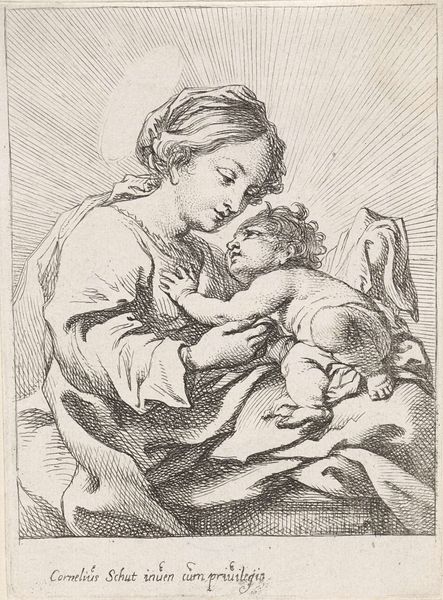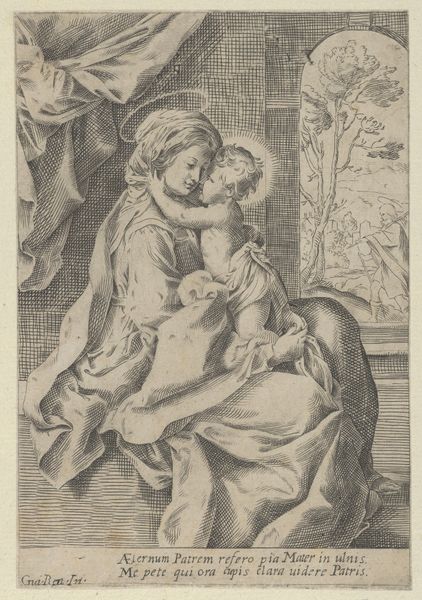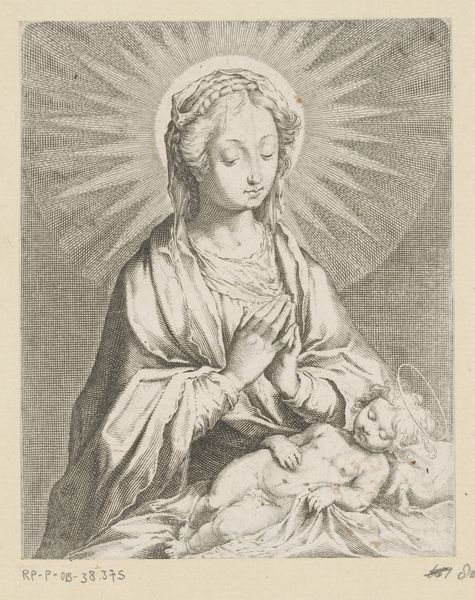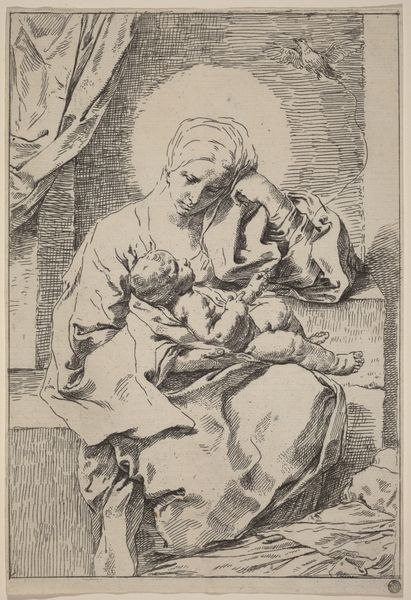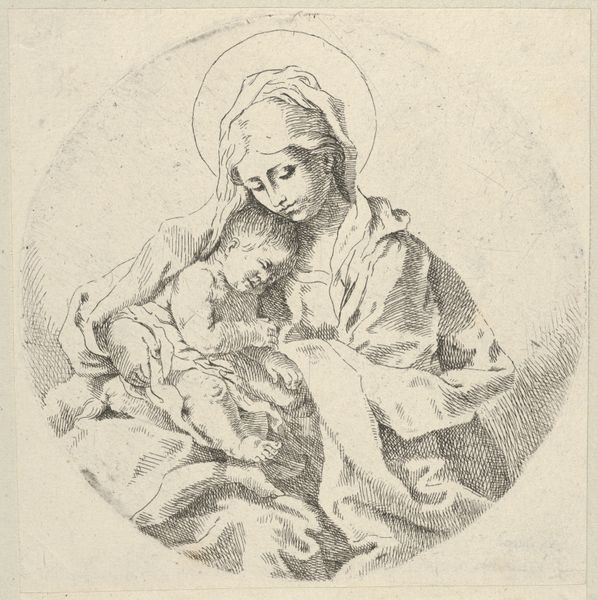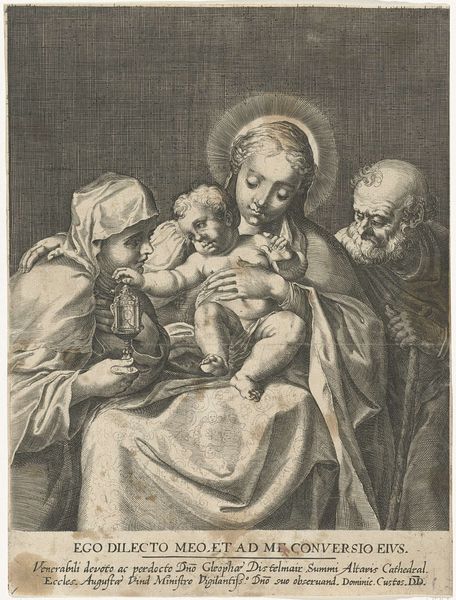
The Virgin holding the infant Christ, after Reni 1715 - 1725
0:00
0:00
drawing, print, engraving
#
portrait
#
drawing
#
baroque
# print
#
figuration
#
history-painting
#
engraving
Dimensions: Sheet (Trimmed): 6 3/8 × 5 1/16 in. (16.2 × 12.9 cm)
Copyright: Public Domain
Curator: I find the composition instantly comforting. There’s such serenity emanating from this print. Editor: Indeed. What we’re looking at is "The Virgin holding the infant Christ, after Reni," an engraving made between 1715 and 1725 by Johann Christoph Winkler, presently housed here at the Metropolitan Museum. It’s a reproduction of a painting by Guido Reni, so we need to consider its historical role as a means of disseminating his image of maternal love. Curator: Absolutely. Note how the composition is built on interlocking curves. The Virgin's head bows toward the child, her arm cradles him, echoed by the folds of her drapery. It's a masterful use of line to suggest not just form, but profound tenderness. Also, it creates a complex play between darkness and light; what effect does that yield? Editor: The stark contrast, characteristic of baroque sensibilities, heightens the emotional drama but also must be understood in relation to printmaking’s unique distribution capabilities at this moment. Religious imagery, like this depiction of maternal warmth, served a crucial function, shaping piety within the broader populace and the engraver allowed its dissemination. Curator: And consider the texture achieved purely through line. See how Winkler varies the density and direction of the hatching to describe the soft flesh of the Christ child versus the more draped form of the Virgin, her sorrow captured. Editor: But let's also note the inscription, "Mater Pulchrae Dilectionis" - Mother of Fair Love. This adds another layer to the work. Images of Mary aren’t merely about divinity, but the embodiment of societal values linked to motherhood. Curator: I'm struck, however, by the intimacy Winkler captures. He doesn't just replicate Reni's visual forms; he channels something deeper through the act of reproduction, some echo that's transferred across a century after the Italian master completed his original image. It suggests art is not static, as this particular reproduction seems to point out, given his source material. Editor: In conclusion, it allows us to consider religious iconography as a product of ongoing dialogues—between artistic inspiration, societal expectations, and the technical means of visual communication available at various times.
Comments
No comments
Be the first to comment and join the conversation on the ultimate creative platform.
